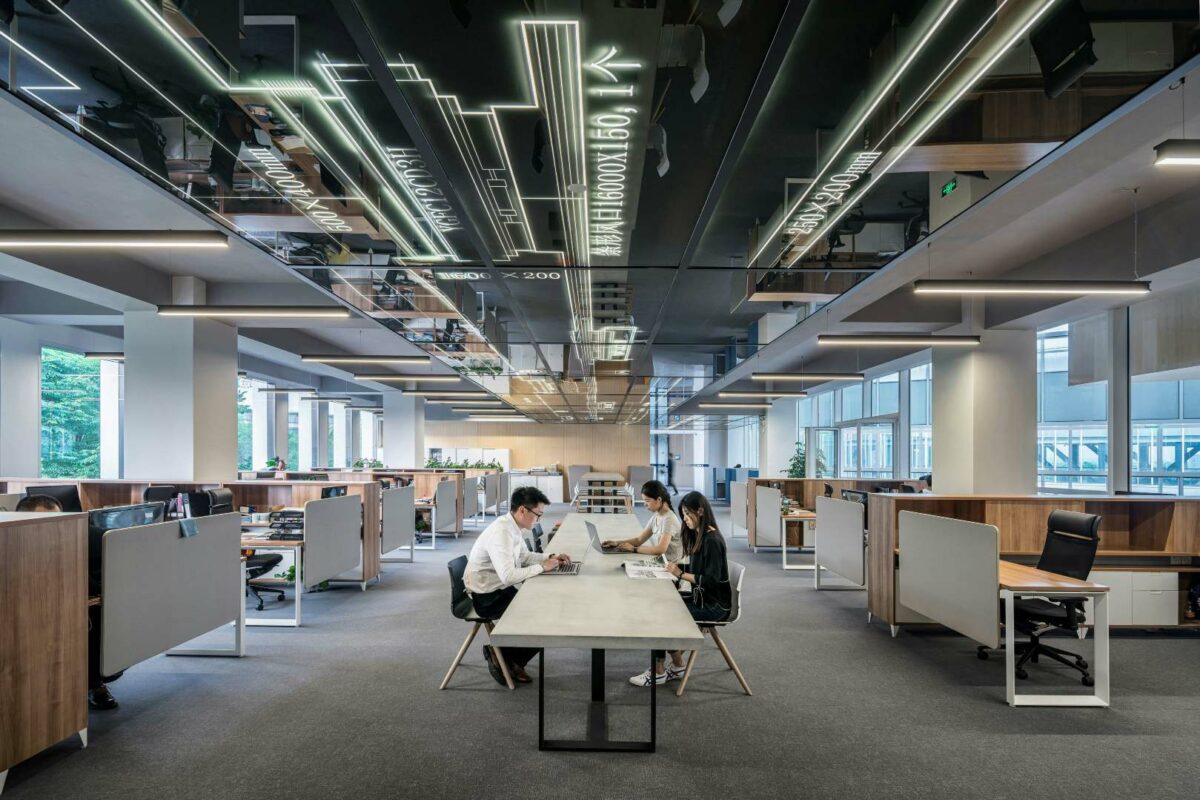The workplace can be home to a number of very real, tangible dangers: wet floors, faulty wiring and don’t get me started on decaffeinated coffee! Behind them, however, are a myriad of unseen hazards. Invisible but damaging, they are carried both on and in the air that we breathe.
Shockingly, indoor air can be up to five times more polluted than outside, according to the United States Environmental Protection Agency (US EPA). For office workers who can spend up to 90% of their time inside, this is a significant concern. Many things that would ordinarily not be given a second thought have the potential to cause unpleasant symptoms, and, in some cases, lead to debilitating long-term health problems.
The guidance given for proper building operation can sometimes feel like a catch-22. Keep the windows closed and poor ventilation leads to a build-up of CO2 and other pollutants. Open the windows and you’re letting in cold or humid air and vehicular pollution. You’re stuck between a rock and a hard place, coughing if you do and dizzy if you don’t.
Everyday pollutants
Perhaps the most ignored culprits in office pollution are volatile organic compounds, or VOCs. These are emitted as gases from a huge array of products, numbering in the thousands. When an object or substance releases VOCs this is known as off-gassing, and it varies according to a number of factors, such as temperature – a higher temperature will result in greater off-gassing.
Given the frequency of our exposure to them, the most concerning VOCs are those found in ordinary, everyday items to which we rarely give a second thought, such as the cleaning products used each night. Many office staples release VOCs too, such as printers, glues, and correction fluids. Meanwhile new furniture, especially that made from synthetic materials, can also be prone to off-gassing.
Even building materials themselves can harbour VOCs. Some plywood panelling and flooring contains formaldehyde, laminates and linoleum can contain acetaldehyde, and wall coverings often contain phenol. Given that formaldehyde, acetaldehyde, and phenol are all potentially carcinogenic chemicals, choice of materials is a particularly crucial during construction.
Certain paints can also release significant levels of VOCs – again, according to the US EPA, immediately following renovation works, VOC levels can be up to a thousand times higher than ambient levels. Several weeks of airing may be required before they return to a normal concentration.
So, what impact does consistent exposure to high levels of VOCs have on us? Adverse health effects to the more harmful VOCs may include eye, nose and throat irritation, skin irritation, headaches, and, in more serious cases, liver and kidney damage. Certain VOCs, such as benzene, which is often found in paint supplies, have even been linked to cancer in animals and potentially humans.
Practical solutions
So, what can we do to mitigate the impact of these invisible nasties? Thankfully, there are a number of solutions that can go a long way to making an office a far less polluted place – some of which are as simple as making sure renovation supplies are disposed of entirely once no longer needed, or emptying the bins before the weekend.
A first step towards eliminating air pollution in the office environment should take place during construction. The market is increasingly populated with low or zero-VOC alternative building materials, which guarantee a lower background level of off-gassing. Though such materials might be slightly more expensive, the cumulative savings of improved staff health and increased productivity mean that costs can be recouped in the long term.
Likewise, office fittings such as carpets should be as free from potential VOC sources as possible. If budgets will only allow for synthetics, some will be better than others – European Standards require that the label indicates VOC levels, making it possible to opt for a lower VOC product.
Reducing VOC exposure in everyday products, such as cleaners and office supplies, is a more difficult task given the frequency of their use. While ‘natural’ products are available in the market, the best advice at present is to use the current products judiciously, and ensure they are stored well away from where people live and work.
A structural measure
Of course, low-VOC materials only address a portion of the problem. Another important structural solution for combatting these issues is comprehensive, well-maintained ventilation systems.
Ventilation systems address a multitude of office pollution issues, limiting CO2 and VOC concentration, and filtering out particulate matter. The positioning of intakes and exhausts can be used strategically, with known VOC-emitters like printers being positioned close to an exhaust and away from where people are sitting. However, in order to be reliable and effective, ventilation systems must be maintained and fully operational, with filters changed regularly. Often, neglected systems can be so noisy that employees prefer to have them switched off entirely.
The technological answer
However, while both of these steps are extremely important, their levels of effectiveness cannot be meaningfully measured and by the time employees are complaining of symptoms, the damage may have already been done. That’s why building managers are increasingly turning to air quality sensor technology as a more precise monitoring solution.
High-quality sensors can be distributed throughout a building to constantly monitor the levels of pollutants, including CO2 and VOCs, alongside environmental metrics such as temperature and humidity. The sensors allow real-time adjustments to be made to ensure employee comfort and health. Through a combination of occupant feedback and machine learning, the technologies can learn to automatically adjust environmental controls to ensure that operation is always within the optimum parameters. Pollutant concentrations can be kept to a minimum, while energy is not wasted powering the system beyond what is required.
Sensor technology also offers a level of proactivity that structural solutions do not. In practice, following cloud-based analysis of their measurements, the sensors would alert the building manager that a problem exists. If the source of the problem can be identified and solved on site, this can be done quickly. If the source is unclear or if it is something that cannot be removed, such as a printer, then ventilation can be increased. If necessary, filtration can be added.
Though the modern office contains a plethora of unseen pollutants from a number of sources, the solutions for addressing them are more varied and innovative than ever. Through a combination of cutting-edge technologies and traditional structural solutions, the office environment can be a safe and healthy one for the millions who work within it.
To see more content on indoor pollutants, click here.
Dr Parag Rastogi manages health, wellbeing and climate products at Glasgow-based building performance technology company arbnco. Dr Rastogi is also a visiting scientist at the RIKEN Institute for Advanced Intelligence Project, Tokyo, Japan.
Content Team
Work in Mind is a content platform designed to give a voice to thinkers, businesses, journalists and regulatory bodies in the field of healthy buildings.




